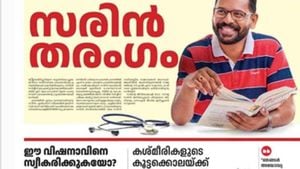The emergence of the Clade I strain of mpox, previously known as monkeypox, has raised new health concerns across the United States. Recently, California health authorities confirmed the first known case of this more severe strain, prompting the U.S. Centers for Disease Control and Prevention (CDC) to issue warnings to healthcare professionals nationwide. The patient, who had recently returned from Eastern Africa, is currently recovering at home.
According to the CDC, this clade I strain is associated with outbreaks occurring primarily in Central Africa, where the disease is endemic. Unlike Clade II, which was responsible for the widespread outbreaks seen during the global mpox crisis of 2022, Clade I tends to cause more severe illness. Public health experts are anticipating the potential for increased cases as travel resumes and monitoring becomes more evident.
The confirmation of this first U.S. case of Clade I mpox follows heightened awareness among health officials, especially after the World Health Organization (WHO) declared mpox a public health emergency. The declaration, made back in August 2022, sparked significant efforts to control the outbreak which had seen more than 32,000 cases reported within the U.S. alone during its peak.
The situation seems to be more complex than initially thought. While historically, Clade I has led to higher rates of severe illness—recorded death rates historically reaching between 3-11%—data from the current outbreak suggests these rates may not hold up as firmly as before, especially among individuals with proper access to healthcare. Experts have observed lower death rates—around 1%—among patients who have received adequate medical care.
Despite these reassurances, health authorities maintain vigilance. The CDC currently rates the risk of Clade I mpox to the U.S. public as low. The agency emphasizes the need for careful monitoring of individuals who traveled from regions where the virus is circulating, as well as those who had close contact with infected individuals. Clade II cases continue to be sporadically reported, and monitoring for potential cases is intensifying.
Mpox spreads through close contact, often requiring skin-to-skin contact or contact with contaminated materials such as clothing and bedding, making it potentially transmissible through intimate means. Symptoms emerge as flu-like initial reactions leading to fever, chills, exhaustion, and muscle aches, followed by more specific rashes characterized by raised lesions. Diagnosis often hinges on awareness of potential exposure and characteristic symptoms.
Public health recommendations include avoiding close contact with anyone displaying symptoms and increasing hygiene practices, particularly hand washing. Individuals are urged to avoid sharing personal items with those who are sick. Given the risks associated with travel to endemic areas, CDC has advised vaccinations for those who may be exposed or travel to high-risk zones.
The current concern extends not only to individual cases but the broader public health situation as the WHO is convening to assess whether this latest mpox outbreak still poses a significant global health emergency. Meeting scheduled on November 22 will summarize findings from affected nations and determine strategic responses moving forward.
Officials remind citizens of the importance of vaccination as a means of protection, especially for those identified as high-risk individuals—such as healthcare workers and those with prior close contact with diagnosed cases. Vaccination strategies are aimed at both controlling immediate outbreaks and establishing preventive measures for future occurrences.
For those living in the U.S., health experts continue to monitor and provide updates on mpox case developments, stressing the importance of remaining informed about public health guidelines and vaccination opportunities. The overall consensus remains hopeful, focused on proactive management, and effective public health responses to mitigate the spread of Clade I mpox as this story evolves.



